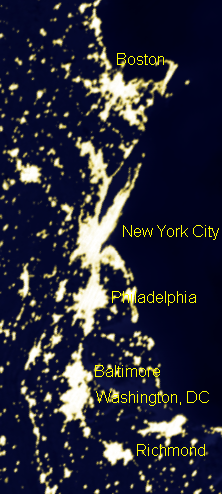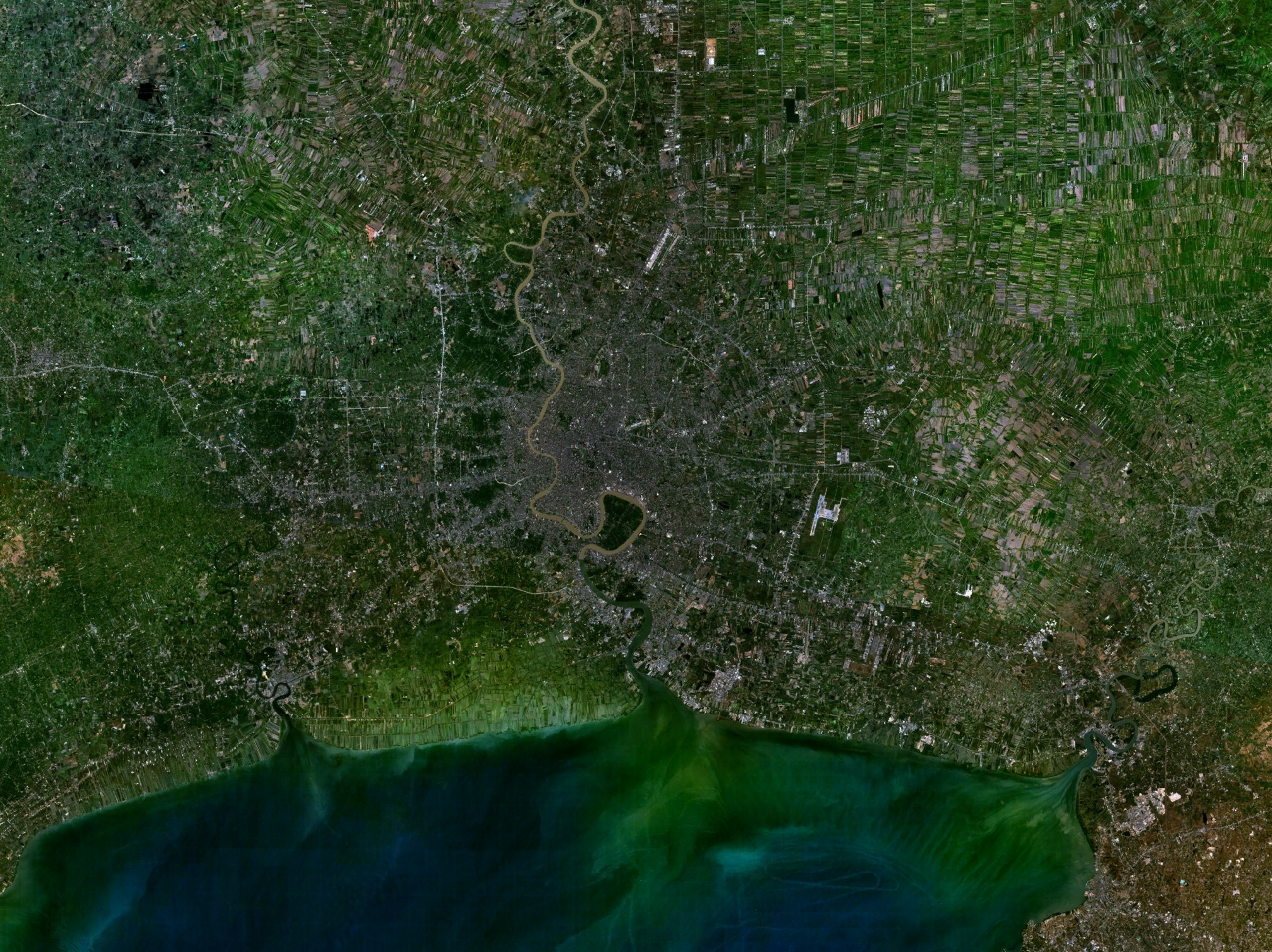|
Peri-urban
Peri-urbanisation relates to the processes of scattered and dispersive urban growth that create hybrid landscapes of fragmented and mixed urban and rural characteristics. Origin The expression originates from the French word ' ("peri-urban" meaning "around urban"), which is used by the INSEE (the French statistics agency) to describe spaces—between the city and the countryside—that are shaped by the fragmented urbanisation of former rural areas in the urban fringe, both in a qualitative (e.g. diffusion of urban lifestyle) and in a quantitative (e.g. new residential zones) sense. It is frequently seen as a result of post-modernity. In science, the term was used initially in France and Switzerland. Structure and function Peri-urban areas (also called ''rurban space'', ''outskirts'' or the ''hinterland'') are defined by the structure resulting from the process of peri-urbanisation. It can be described as the ''landscape interface between town and country''side, or als ... [...More Info...] [...Related Items...] OR: [Wikipedia] [Google] [Baidu] |
Peri-urban Agriculture
Peri-urban regions can be defined as 'superficial' rural areas that are within the orbit of immediate urban hubs, in other words, areas that surround large population centers. These regions can also be referred to as 'exurban areas', 'the rural-urban fringe' or the 'fringe', they include the transition zones between the outer limits of the commuter belt and the edge of newly constructed suburban areas. Peri-urban agriculture is generally defined as agriculture undertaken in places on the fringes of urban areas. However, peri-urban agriculture can be described differently depending on the myriad of urban-rural relationships, and the different farming systems within the various cities and contrasting regions around the world. For instance, the focus of peri-urban agriculture in developing countries is primarily concentrated on the relief of hunger and poverty, hence, food security, as for industrialized countries the emphasis is on ecological and social values. There is no universall ... [...More Info...] [...Related Items...] OR: [Wikipedia] [Google] [Baidu] |
Rural–urban Fringe
The rural–urban fringe, also known as the outskirts, rurban, peri-urban or the urban hinterland, can be described as the "landscape interface between town and country", or also as the transition zone where urban and rural uses mix and often clash together. Alternatively, it can be viewed as a landscape type in its own right, one forged from an interaction of urban and rural land uses. Definition Its definition shifts depending on the global location, but typically in Europe, where urban areas are intensively managed to prevent urban sprawl and protect agricultural land, the urban fringe will be characterized by certain land uses which have either purposely moved away from the urban area, or require much larger tracts of land. As examples: * Roads, especially motorways and bypasses * Waste transfer stations, recycling facilities and landfill sites * Park and ride sites * Airports * Large hospitals * Power, water and sewerage facilities * Factories * Large out-of-town sh ... [...More Info...] [...Related Items...] OR: [Wikipedia] [Google] [Baidu] |
Urban Sprawl
Urban sprawl (also known as suburban sprawl or urban encroachment) is defined as "the spreading of urban developments (such as houses and shopping centers) on undeveloped land near a city." Urban sprawl has been described as the unrestricted growth in many urban areas of housing, commercial development, and roads over large expanses of land, with little concern for urban planning. In addition to describing a special form of urbanization, the term also relates to the social and environmental consequences associated with this development. Medieval suburbs suffered from loss of protection of city walls, before the advent of industrial warfare. Modern disadvantages and costs include increased travel time, transport costs, pollution, and destruction of the countryside. The cost of building urban infrastructure for new developments is hardly ever recouped through property taxes, amounting to a subsidy for the developers and new residents at the expense of existing property taxpayers. I ... [...More Info...] [...Related Items...] OR: [Wikipedia] [Google] [Baidu] |
Peri Urban Regions Platform Europe
Peri Urban Regions Platform Europe (PURPLE) is a network of European regions. It addresses the virtues and needs of the zone around the core cities of metropolitan areas. This peri-urban area is home to a large proportion of Europe's population and the location of companies from both the services and manufacturing sector, and of agriculture. PURPLE members feel that this zone is not addressed satisfactorily in European as well as national and regional plans and strategies. See also * Peri-urbanisation Peri-urbanisation relates to the processes of scattered and dispersive urban growth that create hybrid landscapes of fragmented and mixed urban and rural characteristics. Origin The expression originates from the French word ' ("peri-urban" m ... * FEDENATUR - European Association of Periurban Parks External links * http://www.purple-eu.org * http://europa.eu/rapid/pressReleasesAction.do?reference=SPEECH/08/261&format=HTML&aged=0&language=EN&guiLanguage=en * https://web.a ... [...More Info...] [...Related Items...] OR: [Wikipedia] [Google] [Baidu] |
Suburbanization
Suburbanization is a population shift from central urban areas into suburbs, resulting in the formation of (sub)urban sprawl. As a consequence of the movement of households and businesses out of the city centers, low-density, peripheral urban areas grow. Sub-urbanization is inversely related to urbanization, which denotes a population shift from rural areas into urban centers. Many residents of metropolitan regions work within the central urban area, but live outside of it, in satellite communities called suburbs, and commute to work by car or mass transit. Others have the opportunity to work from home, due to technological advances. Suburbanization often occurs in more economically developed countries. The United States is believed to be the first country in which the majority of the population lived in suburbs rather than cities or rural areas. Proponents of containing the urban sprawl argue that the sprawl leads to urban decay and a concentration of lower-income residents ... [...More Info...] [...Related Items...] OR: [Wikipedia] [Google] [Baidu] |
Urban Sprawl
Urban sprawl (also known as suburban sprawl or urban encroachment) is defined as "the spreading of urban developments (such as houses and shopping centers) on undeveloped land near a city." Urban sprawl has been described as the unrestricted growth in many urban areas of housing, commercial development, and roads over large expanses of land, with little concern for urban planning. In addition to describing a special form of urbanization, the term also relates to the social and environmental consequences associated with this development. Medieval suburbs suffered from loss of protection of city walls, before the advent of industrial warfare. Modern disadvantages and costs include increased travel time, transport costs, pollution, and destruction of the countryside. The cost of building urban infrastructure for new developments is hardly ever recouped through property taxes, amounting to a subsidy for the developers and new residents at the expense of existing property taxpayers. I ... [...More Info...] [...Related Items...] OR: [Wikipedia] [Google] [Baidu] |
Inn River Running Through The Tyrol West Of Innsbruck
Inns are generally establishments or buildings where travelers can seek lodging, and usually, food and drink. Inns are typically located in the country or along a highway; before the advent of motorized transportation they also provided accommodation for horses. History Inns in Europe were possibly first established when the Romans built their system of Roman roads two millennia ago. Many inns in Europe are several centuries old. In addition to providing for the needs of travelers, inns traditionally acted as community gathering places. Historically, inns provided not only food and lodging, but stabling and fodder for the travelers' horses, as well. Famous London examples of inns include The George and The Tabard. However, there is no longer a formal distinction between an inn and several other kinds of establishments: many pubs use the name "inn", either because they are long established and may have been formerly coaching inns, or to summon up a particular kind of ... [...More Info...] [...Related Items...] OR: [Wikipedia] [Google] [Baidu] |
Airport
An airport is an aerodrome with extended facilities, mostly for commercial air transport. Airports usually consists of a landing area, which comprises an aerially accessible open space including at least one operationally active surface such as a runway for a plane to take off and to land or a helipad, and often includes adjacent utility buildings such as control towers, hangars and terminals, to maintain and monitor aircraft. Larger airports may have airport aprons, taxiway bridges, air traffic control centres, passenger facilities such as restaurants and lounges, and emergency services. In some countries, the US in particular, airports also typically have one or more fixed-base operators, serving general aviation. Operating airports is extremely complicated, with a complex system of aircraft support services, passenger services, and aircraft control services contained within the operation. Thus airports can be major employers, as well as important hubs for t ... [...More Info...] [...Related Items...] OR: [Wikipedia] [Google] [Baidu] |
Urban Vitality
Urban vitality is the quality of those spaces in cities that are capable of attracting heterogeneous people for different types of activities throughout varied time schedules. The areas of the city with high vitality are perceived as alive, lively or vibrant and they tend to attract people to carry out their activities, stroll or stay. However, the areas of low vitality repel people and can be perceived as unsafe. The urban vitality index is a measure of this quality and in recent years it has become a fundamental tool for planning urban policies, especially for the intervention of spaces with low vitality. In addition, it is used for proper management of spaces with high vitality, as the success of certain areas can lead to processes of gentrification and touristification that, paradoxically, end up reducing the vitality that made them popular. The concept of urban vitality is based on the contributions of Jane Jacobs, especially those of her most influential work, ''The Deat ... [...More Info...] [...Related Items...] OR: [Wikipedia] [Google] [Baidu] |
Urban Village
In urban planning and design, an urban village is an urban development typically characterized by medium-density housing, mixed use zoning, good public transit and an emphasis on pedestrianization and public space. Contemporary urban village ideas are closely related to New Urbanism and smart growth ideas initiated in the United States. Urban villages are seen to provide an alternative to recent patterns of urban development in many cities, especially decentralization and urban sprawl. They are generally purported to: * Reduce car reliance and promote cycling, walking and transit use * Provide a high level of self-containment (people working, recreating and living in the same area) * Help facilitate strong community institutions and interaction The concept of urban villages was formally born in Britain in the late 1980s with the establishment of the Urban Villages Group (UVG). Following pressure from the UVG, the concept was prioritized in British national planning policy be ... [...More Info...] [...Related Items...] OR: [Wikipedia] [Google] [Baidu] |
Desakota
Desakota is a term used in urban geography used to describe areas in the extended surroundings of large cities, in which urban and agricultural forms of land use and settlement coexist and are intensively intermingled. Etymology The term was coined by the urban researcher Terry McGee of the University of British Columbia around 1990. It comes from Indonesian ''desa'' "village" and kota "city". Desakota areas typically occur in Asia, especially South East Asia. Examples can be found in the urbanised regions of Java, the densely populated, delta-shaped areas on the peripheries of the Jakarta agglomeration (" Jabodetabek"), but also the extended metropolitan regions of Bangkok or Manila. Outside South East Asia, areas with comparable features have been described in mainland China, India, Japan, Taiwan, and South Korea. Characteristics Desakota areas are situated outside the periurban zones, from which daily commuting is easily possible, i.e. more than 30 to 50 km (18 to 30 ... [...More Info...] [...Related Items...] OR: [Wikipedia] [Google] [Baidu] |







